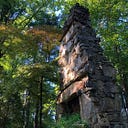Member-only story
Rhetorical Intersections in Early America
Currently, I’m reading David F. Walker, Damon Smyth, and Marissa Louise’s graphic narrative of The Life of Frederick Douglass based on Douglass’ autobiographies. There are a few things from this graphic novel that I plan to write about in the near future; however, as I read it, the above panel stood out. In this panel, Douglass discusses the similarities between systems of oppression that sought to keep African Americans and white women removed from the body politic. This panel made me think about my dissertation, “We Wish to Plead Our Own Cause”: Rhetorical Links Between Native Americans and Africans Americans during the 1820s and 1830s where I explore the intersections between African American, Native American, and white women’s rhetoric during the early 1800s. Specifically, I look at Elias Boudinot, John Russwurm, William Apess, Hosea Easton, Lydia Maria Child, and Catharine Maria Sedgwick.
I wrote the dissertation back in 2013–2014, and after seeing this panel, I wanted to share part of the introduction to the dissertation. I have not revisited it for a few years, and my research has taken me in different directions, as you know if you read my blog regularly. However, I think that this is still an important topic that we need to think about, especially at this moment. You can read part of the introduction below and you can read the entire dissertation by following the…
